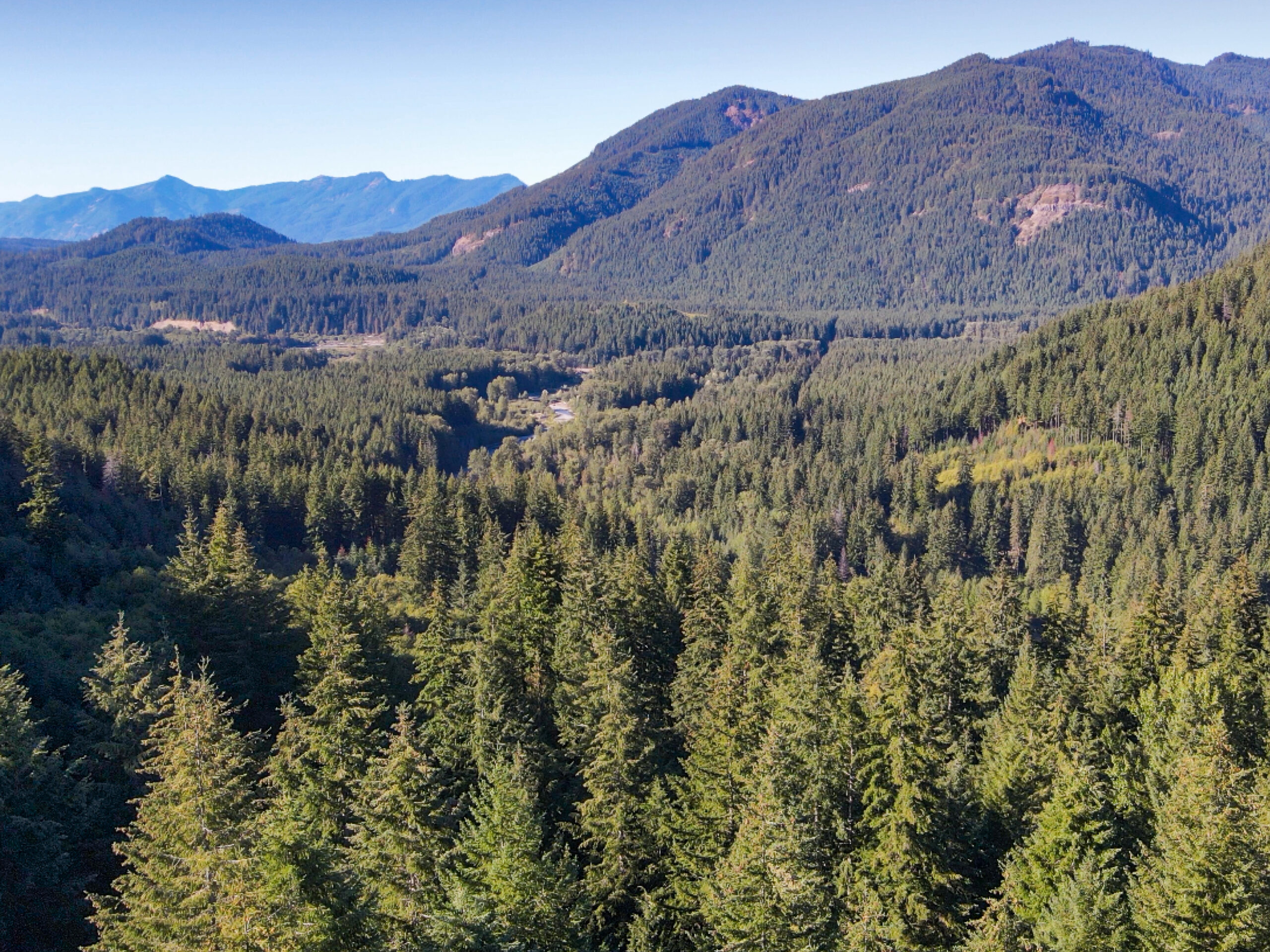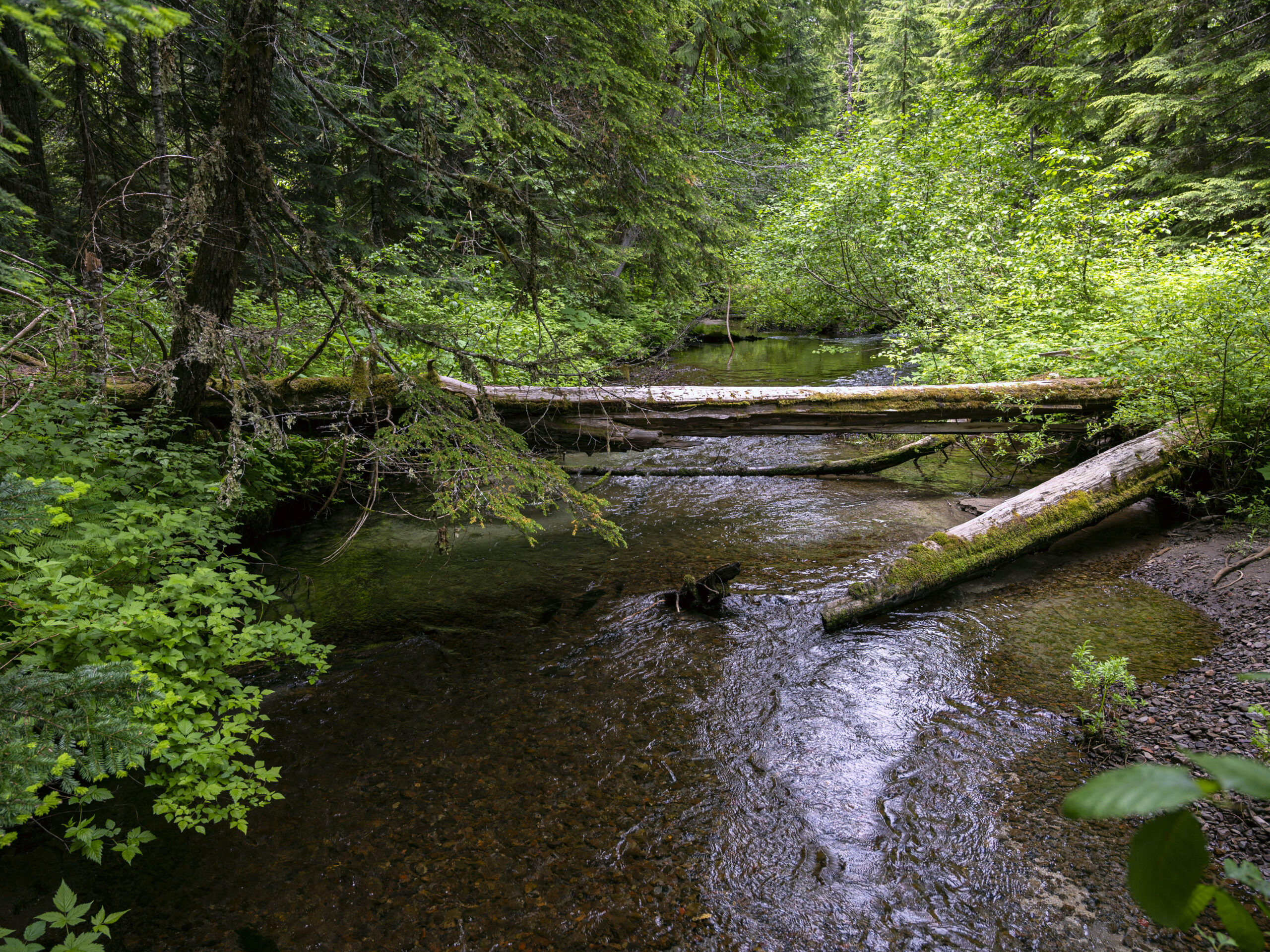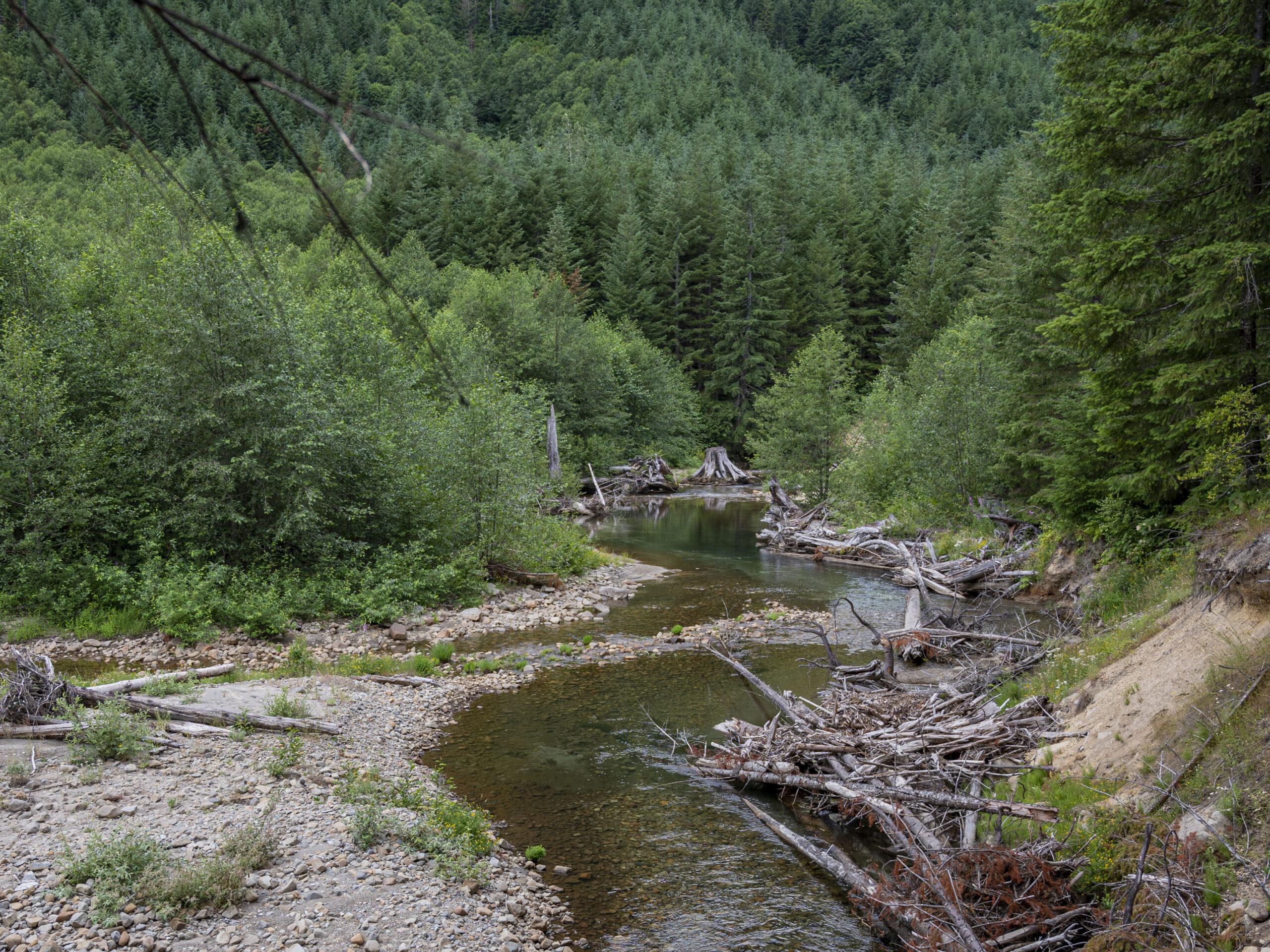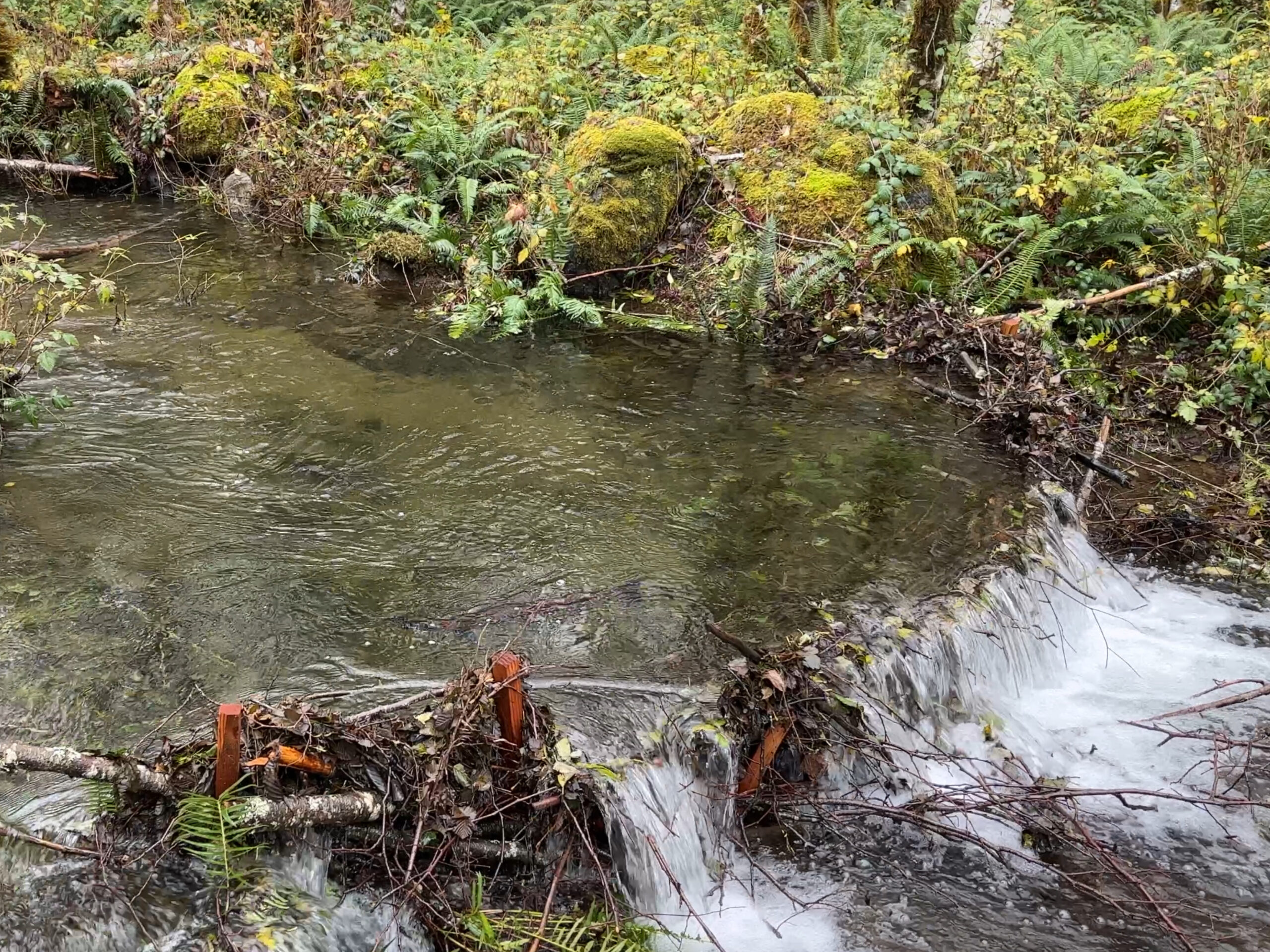[vc_row row_type=”row” use_row_as_full_screen_section=”no” type=”full_width” angled_section=”no” text_align=”left” background_image_as_pattern=”without_pattern” css_animation=””][vc_column width=”1/12″][/vc_column][vc_column width=”5/6″][vc_column_text]Beavers have a bit of a reputation as being nuisances for landowners. But to us, they are self-adapting ecosystem engineers! For that reason, we are beginning a project with Cowlitz Indian Tribe to reintroduce more beavers into the aquatic ecosystems of Gifford Pinchot National Forest. Beavers are able to build resilience to climate impacts, create wetland and side-channel habitat, and improve water quality for downstream communities. In the face of climate change, events like increased winter streamflow and low summer flows and drought, these furry engineers can help mitigate the impacts of fluctuating streamflows. A newly constructed dam will increase channel complexity and forge new routes of flow. This process also helps keep water in the system for longer periods of time and transfers water to wetland areas that could otherwise become dry. Dams can create more deep pools, which is important for many threatened and at-risk fish species that reside in GPNF. All in all, the reintroduction of beavers a unique and self-adapting way to improve aquatic health and enhance resilience to climate impacts we expect to see in the future.

Our goal with the beaver project is to release 18 – 25 beavers over two years into strategic locations in the Gifford Pinchot National Forest. To date, we have carried out site visits with Forest Service biologists and Cowlitz Indian Tribe, begun a spatial analysis to identify optimal release sites, worked with specialists concerning pre-release habitat modifications, planted willows for future beaver forage, and set up plans with local hatcheries to serve as holding facilities for the beavers. Beaver speed dating, anyone? In October, our Young Friends of the Forest participants got the opportunity to visit the forest and gather field data to help assess potential beaver relocation sites. As the year progresses, we will continue to assess more potential beaver relocation sites, and once those sites are chosen, the acquisition of beavers from landowners will begin. From there, beavers will be housed for brief periods of time at local hatcheries, set up with a mate (the beavers will have a higher rate of success in a pair), and then released! Keep an eye on our social media for updates throughout the year. A huge thanks to the Wildlife Conservation Society and the Doris Duke Charitable Foundation for helping to fund this project, as well as our many project partners – especially Cowlitz Indian Tribe and U.S. Forest Service.[/vc_column_text][/vc_column][vc_column width=”1/12″][/vc_column][/vc_row]
Menu






